The strategic focus of our work as an institution over the past ten years has been on increasing impact in the areas of poverty reduction, in resilience building and in enhanced ecosystems services. Since we’ve shared much of this journey together as leaders of the institution, we wanted to take a moment now to share with you our reflections on how well we’ve achieved those impacts and whether what we thought would help us get there has actually worked in practice.
In drafting our Strategic Framework, we sought deep consultation with our focal ministries in countries, partners and donors and discussed our ideas in depth with our Board of Governors. In the process we developed seven strategic results that if achieved, would lead to impact. After much consultation, we framed the strategic results around innovations, use of our knowledge and information, promotion of gender equality and inclusive development, development of human and institutional capacity, policy influence, regional cooperation enhancement, and increased recognition of mountains on the global stage. To deliver these strategic results, we devised a set of trans-disciplinary regional programmes around pertinent topics such as adaptation and resilience building, transboundary landscapes, river basins and cryosphere, atmosphere, mountain environment information systems and mountain knowledge and action networks that all work together in different ways to achieve the outcomes.
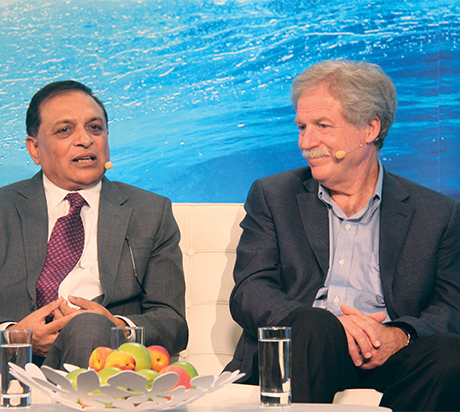
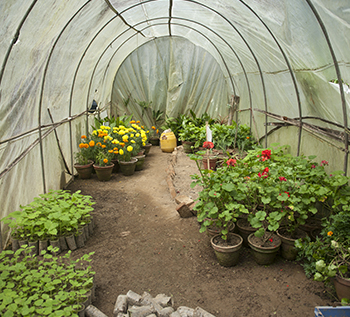
ICIMOD and partners have co-developed many innovations working with communities, and notable examples over the past ten years include climate resilient green technologies including the jholmol organic fertilizer, less
polluting brick kilns, but also mountain tourism innovations and innovations up and down the value chains for high value niche products which are critically important for mountain communities (e.g., yartsa gunbu, yak, large
cardamom). Taking advantage of technology has helped mountain communities with more effective flood early warning systems and forest fire detection using remote sensing. Many innovations are presented in this annual report (see Chapter 1).
In our projects and pilots, we have seen and measured impacts such as the Himalica project which included pilots and action research that increased households’ incomes with their adoption of climate
resilient technologies, and enhanced abilities of community groups in managing their resources, harnessing funds from local agencies, and forging business partnerships with the private sector. We realize that for real and
enduring change, we have to make sure that these innovations are out- and up-scaled to benefit more mountain people across the HKH. We work with partners to ensure capacity to out- and up-scale innovations and we work with
policy makers to ensure that they know about the innovations and that an environment for further investment is created. We have had some notable achievements in this
regard, including our work with the World Food Programme of the United Nations on early warning systems for food shortage, policies in Bangladesh and Pakistan that now pay attention to mountain issues, and NGOs like SABAH
taking up the business of getting high valued mountain products to the market. In this way we are seeing the impacts of our work in increased resilience and decreased poverty.

While science has always been a core pillar of our work, in 2012 we made a strategic move to publish more of our science and to more proactively advocate for the use of the science, data and information. Since that pivot, we
increased the number of peer reviewed publications nearly 10 fold and have increased the number of publications in higher impact journals including 5 in Nature. This important pivot was in part motivated by the globally
significant report from the Intergovernmental Panel on Climate Change (IPCC) which deemed the region “data deficit”. We committed then to a vision that new science on the region come from the region and ideally from the
region’s researchers themselves. We sensed that increased quality and quantity of science would help set the agenda and would help ICIMOD get a seat at the table in key global discussions so we could amplify HKH mountain
voices and issues.
This investment has paid off both for us at ICIMOD and for the entire region. The IPCC process, where 10 ICIMOD staff were involved, published a chapter on High Mountain Areas in its recent Special Report
on Ocean and the Cryosphere and plans a crosschapter paper on mountains in its sixth Assessment Report cycle which is currently wrapping up. Our support to achieving these highly significant results included a significant
publication, the HKH Assessment. The assessment process itself, taking nearly eight years, proved to be a meaningful way to collate ICIMOD and partner science, and answer policy questions relevant to the region. The report
catapulted us into an unprecedented level of media attention (read more on page 92). For us, this has been a wonderful wave of scientific advancement to surf.
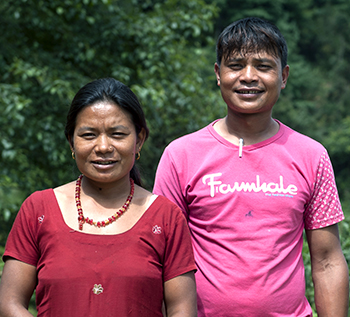
One of the things about which we are most proud over the past ten years is our progress on the admittedly very tough work of gender equity and inclusive development. We know that gender equity and inclusive development are
critical for real sustainable mountain development for everyone, but this agenda needs continuous proactive attention as it easily gets pushed to the background in programs, projects and investments. While also acknowledging
that we still have some distance to travel with these issues, it is satisfying to look at how our gender work has developed over the years and the awareness and voice brought to the issues. We have put in place a dedicated
gender team and have sought to ensure backing on gender equity and inclusive development by management and staff. An institutional and individual initiative-wise gender action plans help to keep us accountable internally so
that we can monitor both the gender integration in our work and the gender transformative approach we use. Over these ten years, we have had many achievements from across our programmes with women groups in communities;
training of women in information technology; partner trainings on gender for men and women; and recent success in considering social issues when working with brick kilns.
Mountain culture has been at the forefront of our
work to ensure inclusive development and to preserve the importance of maintaining cultural diversity in striving to build resilience. In our field work across the HKH we work with a vast number of different mountain
communities, and often bring them together for exchanging information. Our facilitation of cross border exchanges between communities and our work to preserve yak herding cultures in the region stand out as examples.
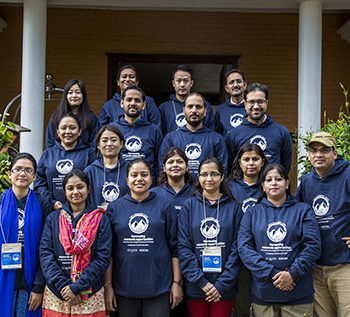
Just as we had committed to build research capacity through numerous trainings, mechanisms like our Himalayan University Consortium, our support to a Kathmandu University Master’s degree programme in glaciology and our hosting of some very talented PhD Fellows through the years, we have also been committed to a range of other kinds of capacity building. We wanted to build institutional capacity through long-term meaningful partnerships aimed at addressing mountain challenges and focused on co-developing solutions. Over these ten years, we have supported more than 200 different institutions and more than 30 thousand individuals in promoting sustainable mountain development in HKH region. But more than the numbers, it’s the impact that matters and we’re proud that our partners working together with us, have developed, applied, and scaled out a resilient mountain villages approach; scaled out cleaner brick kilns; and implemented flood early warning systems. Our partners also help us shape our work. We believe that this institutional capacity is the legacy of ICIMOD and ensures sustainability of the impacts we seek.
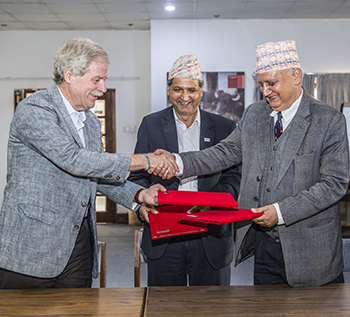
Positively influencing government policy has also been a key mechanism to multiply the impact of our work. We aimed to play a bridging role with practical innovations and scientific, ensconcing these within our programmes and initiatives. We leveraged our intergovernmental status and the strength of our Board of Governors drawn from senior government officials, to ensure that our access at high levels in government focused on conversations about the incredible assets of our HKH mountain regions. We proactively engaged at the science-policy interface to communicate an evidence base for more specific and effective policies for mountain environments and people and to ensure that mountains are acknowledged as contexts deserving special attention in national policies. We engaged with the media to make sure that the public has access to knowledge. We’ve made a difference in bringing more attention to the Chittagong Hill Tracts in Bangladesh’s five year plans; in supporting development of organic agriculture policy in Bhutan; in supporting NITI Aayog of India on a range of mountain-specific topics for the Indian Himalayan Region; in promoting community forestry and REDD+ in India, Myanmar, and Nepal; in contributions to the development of India’s draft Forest Policy and Nepal’s Environment Bill; in focusing on mountain agriculture in Pakistan’s food security policy and in rapid policy reforms in the clean brick sector.
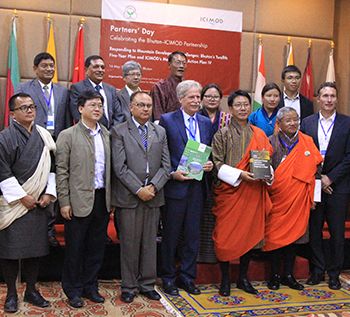
National-level work and impact is important since it helps us to delve into the individual contexts and allows us so much rich experience that we share among our other regional member countries. A key role of ICIMOD is to take mountain issues beyond boundaries to leverage the unique regional nature of our institution and to forge more cooperation across countries by focusing on issues of common concern like climate change and mountains themselves. As a regional institution focusing on mountains across these 8 spectacular countries, fostering regional cooperation has been where we feel we’ve made significant impact in an area where the cost of non-cooperation is too high. In spite of the tensions that crop up in the region, ICIMOD remains a platform where we work together across boundaries. This is very true in our transboundary landscape work where we engage governments and practitioners to jointly manage landscapes, set up wildlife corridors, develop joint products and learn from each other about tourism or the potential for high valued mountain products. Even in the field of water which can be highly contentious, we have fostered very good relationships in the Upper Indus Basin network between India, Pakistan, Afghanistan and China focusing on science and solutions and providing a meeting place. And there is plenty of knowledge and experience sharing in the region almost on a day to day basis. The HKH Assessment process brought scientists from across borders together to address important mountain policy issues, and to develop an HKH Call to Action to bring science to practice. Great momentum has been built for the Call to Action and we’re excited about the direction its taking both towards an 8 country science-policy forum for joint evidence-based discussion on mountains, and towards a potential platform like an Arctic Council or Alpine Convention for the HKH mountains.
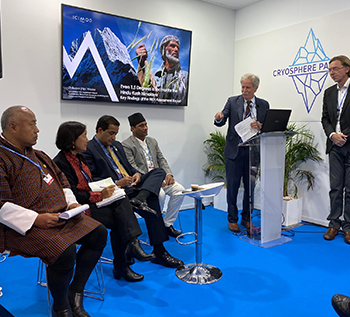
Sitting here in the ICIMOD office, it is abundantly clear to us that the HKH mountains are a global resource and important for water, energy, cultural diversity, natural beauty and biodiversity. They are the pulse of planet.
Yet we also realize that the HKH remain a distant and less immediate concern for many people. We have sought to shift that perspective, through highlighting the severe climate change and pollution impacts on the HKH
mountains and through emphasizing that mountain people themselves contribute minimally to these global problems. Rather, they carry unequal global burdens, face disintegration of their unique cultures and undervaluation of
their indigenous knowledge. We have brought attention to the mountains through amplifying these issues on the global stage, whether it is through assessments like IPCC or IPBES, or involvement in global process like UNFCCC
or CBD; or through our regional HKH Assessment which has reached scientists, policymakers and citizens across the globe. But we know that the HKH requires much more attention, policies and investments if the HKH mountains
are to become prosperous and are to retain its youth with a range of robust livelihood options.
It is this vision of a prosperous HKH which has inspired us through our years of service to ICIMOD and we are proud of the
collective achievements of our talented, diverse staff and our dedicated, innovative partners. Together, we have made important gains towards the goals that were set for ICIMOD. We have contributed to policies and practices,
including cross-border that have reduced vulnerabilities of ecosystems. We have made a difference in income for poor people while reaching one million people directly and more than 10 million people indirectly through policy
and scaling up efforts. We have evidence that further investments (more than 30 million dollars leveraged) were made based on our work. Over the years, ownership of the 8 regional member countries for ICIMOD’s work has
increased. We have also seen ICIMOD has grown as an institution much more responsive to the region’s needs. Many strategic partnership have developed to meet the challenges of climate change and resilience. As we write this
report, we do realize that the COVID-19 shock has set back so many development gains in many of our HKH countries, at a time when important strides were being made on the SDGs. But this is where resilience of mountain
communities is important, and ICIMOD is committed to doing all we can to build that resilience, to make a difference for HKH mountain environments and HKH mountain people and to continuously build on our legacy so that men,
women, and children of the Hindu Kush Himalaya enjoy improved well-being in a healthy mountain environment.
Annual report 2019